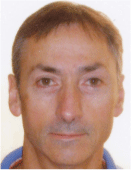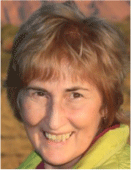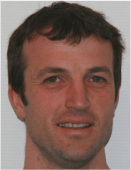New insights into the deep-water Otway Basin – Part 2. Tectonostratigraphic framework revealed by new seismic data
Alex Karvelas A E , Tekena West B , Chris Nicholson C , Steve Abbott C , George Bernardel C , Cameron Mitchell C , Duy Nguyen C , Merrie-Ellen Gunning C , Irina Borissova C and Oliver Schenk DA Schlumberger, Perth, Australia.
B Schlumberger House, West Sussex, United Kingdom.
C Geoscience Australia, Symonston, Australia.
D Schlumberger GmbH, Aachen, Germany.
E Corresponding author. Email: AKarvelas@slb.com
The APPEA Journal 61(2) 657-664 https://doi.org/10.1071/AJ20092
Accepted: 30 March 2021 Published: 2 July 2021
Abstract
The inboard areas of the Otway Basin, particularly the Shipwreck Trough, are well explored and a petroleum-producing province. However, outboard in water depths greater than 500 m, the basin is underexplored with distant well control and sparse 2D reflection seismic data coverage. The presence of a successful petroleum province onshore and in shallow waters raises the question as to whether these plays may extend further outboard into the deep-water areas. In the deep-water area, structural complexity and poor imaging of events in the legacy seismic data have resulted in interpretation uncertainty and consequentially a high-risk profile for explorers. The 2020 Otway Basin seismic program acquired over 7000-line km of 2D reflection seismic data across the deep-water Otway Basin. In addition, over 10 000 km of legacy 2D seismic data were reprocessed to improve the tie between the inboard wells and the new seismic grid. This new dataset provides the first clear insight into the structural and stratigraphic framework of this frontier area, including better imaging of the sedimentary section and the lower crust, increased structural resolution and improved calibration of the outboard seismic reflectors via ties to the inboard wells. Interpretation of the new data has led to an improved assessment of the structural elements and the extension of regional supersequences into the deep-water areas. These refinements have been used as input into petroleum systems modelling work and will provide a foundation for future work to understand petroleum prospectivity, including the distribution of source, reservoir and seal facies.
Keywords: seismic interpretation, tectonostratigraphy, supersequence, Otway Basin.

Alex Karvelas is the exploration lead for the Exploration Data Australasia region based in Perth. His role includes interpretation on depth imaging and reprocessing projects but also supporting new acquisition projects from survey design, data processing, through to final delivery. In addition to supporting live projects in Australasia, he is also actively part of the Exploration and Petroleum Systems Modelling groups that support exploration campaigns and basin hydrocarbon assessment projects around the world. |

Tekena West is a senior exploration geoscientist for Exploration Data Europe and Africa region based in London. He has a decade of industry experience in regional 2D and 3D land/marine seismic interpretation and petroleum prospectivity evaluation for exploration and development projects for sedimentary basins worldwide including Northern and Southern Gulf of Mexico, North Sea, Cote d’Ivoire, Ghana, Nigeria, Angola, Mozambique, New Zealand and Australia. He received his master’s degree in Exploration Geophysics from the University of Leeds. |

Chris Nicholson joined Geoscience Australia in 2004. He is a structural geologist and basin analyst in the Basin Systems Branch of GA’s Mineral, Energy and Groundwater Division where he works on regional prospectivity studies of Australia’s offshore basins. His current focus is the Otway Basin, and prior to that, he was a director of the North West Margins Energy Systems team investigating the prospectivity of Triassic interval across the central NWS. He has previously led and been involved in similar hydrocarbon prospectivity studies and CO2 storage assessments in the Browse Basin and other frontier offshore basins, including the northern Perth, Mentelle and Bight basins and the Vlaming and Bremer sub-basins. He graduated with a BSc (Hons) in Geology from the Australian National University in 2000. He is a member of the Petroleum Exploration Society of Australia (PESA) and South East Asia Petroleum Exploration Society (SEAPEX). |

Steve Abbott joined Geoscience Australia in 2013 where he works on regional tectonic and stratigraphic studies of Australia’s offshore basins. Past roles include mineral exploration (mainly sedimentary uranium in central Australia), teaching and research (Southern Cross University, James Cook University and University of Tasmania) and regional mapping (Northern Territory Geological Survey). He earned his qualifications in sedimentary geology from Flinders (Hons 1987) and James Cook universities (PhD 1994). |

George Bernardel is a geoscientist in the Offshore Energy Systems Branch in the Minerals, Energy and Groundwater Division of Geoscience Australia. He gained his BSc (Honours) in Geophysics from the University of Sydney in 1986 and joined Geoscience Australia in 1995. His current role is the seismic mapping of Cretaceous–Cenozoic sequences and structure across the offshore Otway Basin. |

Cameron Mitchell is a senior geoscientist in Geoscience Australia of the Energy Systems Branch and has 20 years of experience in the offshore geoscience realm where he has performed a diverse range of roles. These include basin and margin petroleum and CO2 prospectivity analysis using seismic, remote sensing and physical acquisition and integration within the 3D realm. He has been responsible for managing several large geophysical data and remote-sensed acquisition programs, and in 2007, he was a chief scientist of the Bight Basin Sampling and Seepage Survey. Recently, he implemented a Branch modernisation project and previously worked on the tectonostratigraphic studies of the deep-water Otway and Sorell basins and the Houtman Basin. |

Victor (Dan) Nguyen holds BE and ME (Petroleum Engineering) degrees from the University of New South Wales. As part of his degrees, he researched on techno-economics of CO2 geological sequestration in Australia. He published and presented his work on a number of international conferences. He has five years of oil and gas industrial experience working for Schlumberger in Australia, Malaysia, India, Middle East and Africa. Since 2009, he has worked as a petroleum engineer at Geoscience Australia assessing the CO2 geological storage potential of Bonaparte, Gippsland and Browse basins as well as petroleum prospectivity in the Roebuck Basin. He is currently contributing to a regional geological study in the Otway Basin. |

Merrie-Ellen Gunning has over 20 years of experience in the Oil and Gas industry where she has performed a diverse range of roles from strategic planning, business development and operations management to technical roles specialising in geophysics and exploration. Added to this is 5 years of experience in the aluminium industry across the value chain from extraction, mining bauxite and nepheline, through refining alumina to smelting. In addition to her extensive knowledge of industry in Australia, her experience has included postings to Indonesia, Norway, the United States, Russia and Singapore and overseeing operations across the world. She has an MBA from Melbourne Business School and a Bachelor of Applied Science in Geology. She joined Geoscience Australia in August 2015 and has worked on a wide range of prospectivity and CO2 storage projects, leading the Energy Systems Branch throughout 2017 and is currently a director of Offshore Energy Systems. |

Dr. Irina Borissova is a retired senior geoscientist with 27 years of experience in Geoscience Australia. She graduated from Moscow State University and in 1985 gained a PhD from the Russian Academy of Sciences in Marine Geology and Tectonics. Since joining Geoscience Australia in 1993, she contributed to geological studies of many areas on the Australian margin. She also contributed to GA-IODP and GA-universities collaboration on frontier basins and was a member of ANZIC Science Committee between 2014 and 2018. The most recent work includes the Vlaming Sub-basin CO2 storage assessment and petroleum prospectivity study of the Houtman Sub-basin. She is also a member of PESA. |

Oliver Schenk is a senior basin and petroleum system modeller for Schlumberger, technically supporting new ventures work. He has more than 14 years of experience in multi-dimensional applications of basin and petroleum system modelling in the international petroleum exploration industry. Since 2007, he has been affiliated to the basin and petroleum system modelling group at Stanford University, mentoring graduate students and providing occasionally guest lectures. He received his Diploma degree in Geology from RWTH Aachen University in Germany as well as a PhD in Structural Geology in which he focused on fluid-assisted grain boundary migration in rocks and analogues. |
References
Krassay, A. A., Cathro, D. L., and Ryan, D. J. (2004). A regional tectonostratigraphic framework for the Otway Basin. In ‘Eastern Australasian Basins Symposium II’. (Eds P. J. Boult, D. R. Johns, and S. C. Lang.) pp. 97–116. (Petroleum Exploration Society of Australia, Special Publication.)Lee, S. Y., Lim, B. J., Anantan, A., and Karvelas, A. (2021). New insights into the deep-water Otway Basin – Part 1. Integrated depth imaging workflows unravelling the subsurface. The APPEA Journal 61, 652–656.
| New insights into the deep-water Otway Basin – Part 1. Integrated depth imaging workflows unravelling the subsurface.Crossref | GoogleScholarGoogle Scholar |
Romine, K., Vizy, J., Nelson, G., Lee, J. D., Baird, J., and Boyd, M. (2020). Regional 3D geological framework model: Otway Basin, Victoria. Victorian Gas Program Technical Report 35, Melbourne.
Schenk, O., Edwards, D., Grosjean, E., West, T., and Karvelas, A. (2021). New insights into the deep-water Otway Basin – Part 3. Petroleum system modelling. The APPEA Journal 61, 665–672.
| New insights into the deep-water Otway Basin – Part 3. Petroleum system modelling.Crossref | GoogleScholarGoogle Scholar |
Stagg, H. M. J., Cockshell, C. D., Willcox, J. B., Hill, A. J., Needham, D. V. C., Thomas, B., O’Brien, G. W., and Hough, L. P. (1990). Basins of the Great Australian Bight Region: geology and petroleum potential. Bureau of Mineral Resources. Continental Margins Program Folio 5.
Totterdell, J. M., Gibson, G. M., Stacey, A. R., Mitchell, C. H., Morse, M. P., Nayak, G. K., and Kusznir, N. J. (2012). The structure of Australia’s southern rifted margin: basement architecture, rifting processes and basin development. 34th International Geological Congress 2012, Brisbane, Australia. Poster and Abstract 2346.


